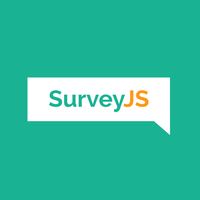lens
k9s
Our great sponsors
| lens | k9s | |
|---|---|---|
| 113 | 126 | |
| 22,180 | 24,857 | |
| 0.5% | - | |
| 9.3 | 9.4 | |
| 3 months ago | 2 days ago | |
| TypeScript | Go | |
| MIT License | Apache License 2.0 |
Stars - the number of stars that a project has on GitHub. Growth - month over month growth in stars.
Activity is a relative number indicating how actively a project is being developed. Recent commits have higher weight than older ones.
For example, an activity of 9.0 indicates that a project is amongst the top 10% of the most actively developed projects that we are tracking.
lens
- Mirantis K8s Lens closed its source
- The Hater's Guide to Kubernetes
-
The Inner Workings of Kubernetes Management Frontends — A Software Engineer’s Perspective
Lens
-
Introduction to Helm: Comparison to its less-scary cousin APT
Generally I felt as if I was diving in the deepest of waters without the correct equipement and that was horrifying. Unfortunately to me, I had to dive even deeper before getting equiped with tools like ArgoCD, and k8slens. I had to start working with... HELM.
-
Imagine the best Kubernetes Dashboard. What does it have?
Indeed you can, with several "paid" features removed, like log tailing and pod shells. They deliberately hobbled the product. If you want to use Lens, my advice is pay for the supported version.
-
observing logs from Kubernetes pods without headaches
yes I know there is lens, but it does not allow me to see logs of multiple pods at same time and what is even more important it is not friendly for ephemeral clusters - in my case with help of kind I am recreating whole cluster each time from scratch
- Lazydocker
-
Cloud Native Workflow for *Private* AI Apps
Let's wait for few seconds for the pods to become green, I am using Lens, it's awesome btw.
-
Fastest way to set up an k8s environment ?
You probably don't need Rancher unless you need a GUI or manage multiple clusters, Lens or k9s might be a better fit for your use case.
-
'ekscli' vs. 'aws eks'
`openlens` is now preferred over `Lens`, it has everything you need and none of the fluff that Lens wants to charge you for.
k9s
-
Upgrading Hundreds of Kubernetes Clusters
Pierre: The first tool I recommend is K9s. It's not just a time-saver but a productivity booster. With its intuitive interface, you can speed up all the usual kubectl commands, access logs, edit resources and configurations, and more. It's like having a personal assistant for your cluster management tasks.
-
Easy Access to Terminal Commands in Neovim using FTerm
The last thing you really need is a common set of tools that you want fingertip access to. I really commonly use LazyGit and K9s in my day job so those are the tools I will show off in this article.
-
🎀 Five tools to make your K8s experience more enjoyable 🎀
K9s is your best friend (get it? 🐶) when exploring your cluster via the terminal. It shares commonality with Vim for its interaction style using shortcuts and starting commands with: but don’t let that discourage you. K9s keeps a vigilant eye on Kubernetes activities, providing real-time information and intuitive commands for resource interaction.
-
Building a Kubernetes Operator with the Operator Framework
k9s: brew install k9s
-
Harlequin: SQL IDE for Your Terminal
I would like to put in a vote for k9s, which is also on the list at Terminal Trove. [0] It's the most convenient tool I've ever found for Kubernetes management. Based on that experience I'll definitely be checking out Harlequin.
[0] https://k9scli.io/
-
Your First K8S+Istio
$ wget https://github.com/derailed/k9s/releases/download/v0.29.1/k9s_Darwin_amd64.tar.gz $ tar -xzf k9s_Darwin_amd64.tar.gz $ sudo mv k9s /usr/local/bin/
-
Seeking Guidance for Transitioning to Kubernetes and SRE/DevOps for traditional infrastructure team
All in all, run things, do some kubectl apply -f something.yml every day, install k9s, and try to configure a big one cluster at some point.
-
Architecting for Resilience: Crafting Opinionated EKS Clusters with Karpenter & Cilium Cluster Mesh — Part 1
(K9s is one of my favorite tools for navigating Kubernetes clusters through the CLI).
-
Top 10 CLI Tools for DevOps Teams
K9s is an open-source, terminal-based UI for interacting with your Kubernetes clusters, making navigating, observing, and managing your apps easier. If you use Kubectl but wish it was easier and faster to use, K9s might be just what you're looking for!
-
Use Tetragon to Limit Network Usage for a set of Binary
k9s
What are some alternatives?
rancher - Complete container management platform
k8s - How to deploy Portainer inside a Kubernetes environment.
Portainer - Making Docker and Kubernetes management easy.
minikube - Run Kubernetes locally
kubelogin - kubectl plugin for Kubernetes OpenID Connect authentication (kubectl oidc-login)
popeye - 👀 A Kubernetes cluster resource sanitizer
octant - Highly extensible platform for developers to better understand the complexity of Kubernetes clusters.
k3s - Lightweight Kubernetes
argo - Workflow Engine for Kubernetes
stern - ⎈ Multi pod and container log tailing for Kubernetes
Monokle - 🧐 Monokle Desktop empowers you to better create, understand, and deploy YAML manifests with a visual UI that also provides policy validation and cluster insights.
kubebox - ⎈❏ Terminal and Web console for Kubernetes
